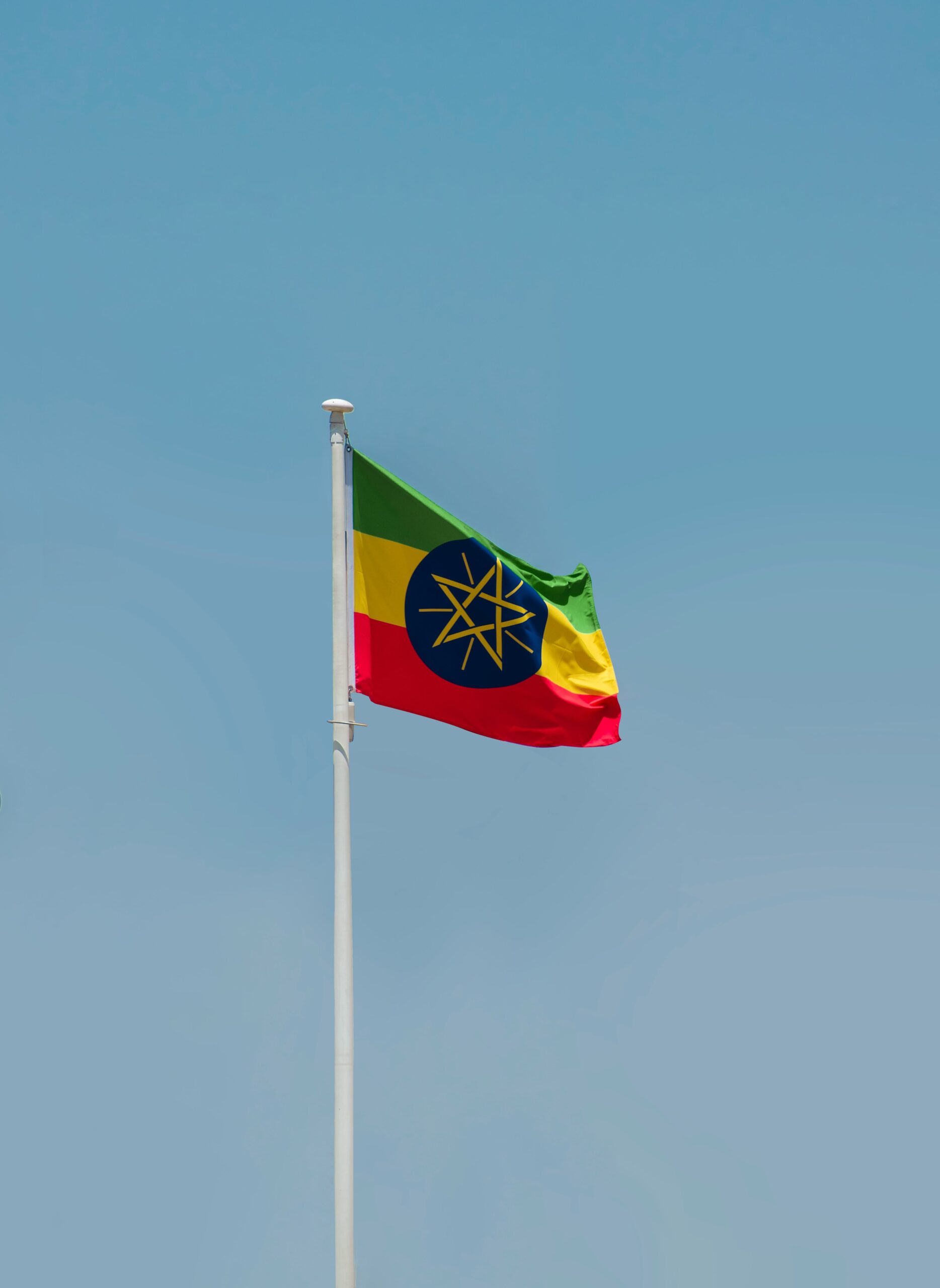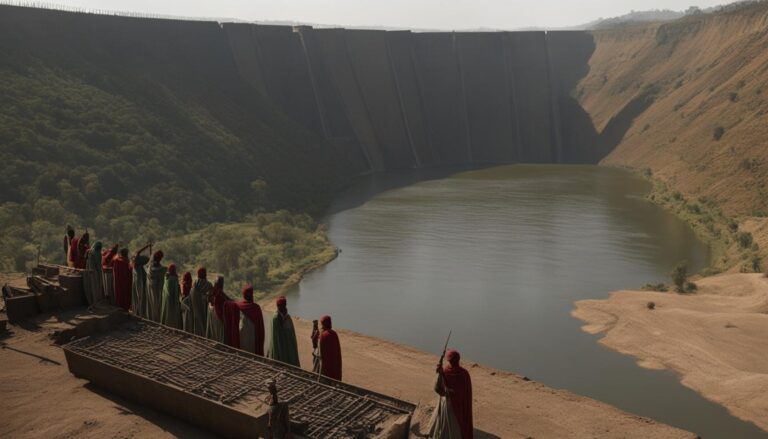Lake Tana And The Blue Nile Falls Ethiopia
Lake Tana: The Largest Lake in Ethiopia
Lake Tana, situated in the northern part of Ethiopia, holds the distinction of being the largest lake in the country. This majestic lake spans approximately 2,156 square kilometers and reaches a maximum depth of 15 meters, making it a significant natural landmark in the region. The lake’s serene waters are a vital source of life for the communities that dwell along its shores, supporting a rich and diverse ecosystem that thrives in this unique freshwater environment.
The scenic beauty of Lake Tana attracts visitors from far and wide, drawn not only to its vast expanse of water but also to the countless islands that dot its surface. These islands are home to ancient monasteries and churches that bear testament to Ethiopia’s rich religious heritage, adding a cultural dimension to the natural splendor of the lake. The remote location of many of these monastic sites has helped preserve their historical significance, offering visitors a glimpse into Ethiopia’s spiritual past.
In addition to its cultural importance, Lake Tana plays a crucial role in the region’s economy, supporting a thriving fishing industry that provides sustenance for local communities. The lake’s abundant fish population has long been a vital source of protein for the people living in the area, ensuring food security and economic stability for many households. Moreover, the fertile lands surrounding Lake Tana are used for agriculture, furthering the lake’s contribution to the local economy.
The biodiversity of Lake Tana is another aspect that sets it apart as a natural wonder in Ethiopia. The lake and its surrounding wetlands are home to a wide array of plant and animal species, many of which are endemic to the region. This rich ecosystem supports a diverse bird population, making Lake Tana a haven for birdwatchers and nature enthusiasts. Additionally, the lake’s waters are teeming with fish species, further enhancing its ecological significance.
Lake Tana stands as a symbol of Ethiopia’s natural beauty and cultural heritage. Its tranquil waters, lush islands, and diverse wildlife make it a destination worth exploring for those seeking to immerse themselves in the wonders of this East African nation. Whether it’s taking a boat ride to discover the hidden treasures of the lake or exploring the ancient monasteries that grace its shores, Lake Tana offers a unique and memorable experience for all who visit its shores.
Lake Tana and the Blue Nile Falls hold immense significance in Ethiopian culture and history, contributing to the country’s rich heritage. Lake Tana, the largest lake in Ethiopia, is situated in the northern part of the country and serves as the primary source of the Blue Nile River. This iconic lake, covering an area of approximately 1,400 square miles, not only plays a vital role in sustaining local communities but also holds religious importance in Ethiopian Orthodox Christianity.
The Ethiopian Orthodox Tewahedo Church considers Lake Tana as a sacred body of water, believed to be the source of the Blue Nile, one of the main tributaries of the Nile River. The lake is home to numerous islands, some of which host ancient monasteries dating back to the 14th century. These monasteries house valuable religious artifacts and manuscripts, attracting pilgrims and tourists alike. The cultural and historical significance of Lake Tana is deeply ingrained in the traditions and beliefs of the Ethiopian people, making it a revered site in the country.
Moreover, Lake Tana’s ecological importance cannot be understated. The lake and its surrounding areas support a vast array of flora and fauna, contributing to the region’s biodiversity. The rich ecosystem around Lake Tana provides habitat to diverse bird species, indigenous plants, and a variety of fish. This delicate balance of nature is crucial for the sustenance of local communities that depend on the lake for fishing and agriculture.
In close proximity to Lake Tana lies the breathtaking Blue Nile Falls, also known as "Tis Issat" in Amharic, meaning "smoking water." The Blue Nile Falls is a majestic waterfall on the Blue Nile River, plunging over 140 feet, and is a sight to behold for visitors. The mist rising from the cascading waters creates a mesmerizing spectacle, earning its nickname as the "smoking water." The Blue Nile Falls not only captivate with their natural beauty but also provide hydropower potential for the region.
Exploring the cultural, historical, and natural wonders of Lake Tana and the Blue Nile Falls offers visitors a unique and enriching experience. The harmonious coexistence of tradition, spirituality, and nature in this region exemplifies the cultural tapestry of Ethiopia. As efforts continue to promote sustainable tourism initiatives in the Lake Tana region, preserving the ecological integrity and cultural heritage of this area remains paramount for future generations to appreciate and cherish.
Lake Tana and the Blue Nile Falls Ethiopia: Discovering the Breathtaking Beauty
Lake Tana, located in the north-western part of Ethiopia, is the primary source of the Blue Nile River, one of the major tributaries of the Nile River. Nestled amidst the picturesque Ethiopian highlands, Lake Tana is the largest lake in Ethiopia and the source of life for many communities living around its shores. The serene waters of Lake Tana harbor a rich diversity of flora and fauna, making it an essential ecological hotspot in the region.
One of the most spectacular natural wonders near Lake Tana is the Blue Nile Falls, also known as "Tis Issat" in Amharic, which translates to "smoking water." These majestic falls are located on the upper course of the Blue Nile River, plunging over 45 meters in a dramatic cascade that captivates visitors with its sheer power and beauty. The misty spray rising from the base of the falls creates a unique microclimate, nurturing lush vegetation in the surrounding area.
Visiting the Blue Nile Falls is a memorable experience for nature lovers and adventure seekers alike. The journey to the falls often involves a scenic boat ride on Lake Tana, followed by a hike through the verdant countryside to reach the viewing point. As visitors approach the falls, the thundering sound of water grows louder, building anticipation for the awe-inspiring sight that awaits them.
The Blue Nile Falls hold great cultural significance for the Ethiopian people, who consider the falls to be a sacred site imbued with spiritual importance. According to local beliefs, the falls are believed to be the dwelling place of a benevolent spirit, and it is customary for visitors to offer prayers and perform rituals as a sign of respect for the natural world.
In recent years, efforts have been made to promote sustainable tourism initiatives in the Lake Tana region to preserve its natural beauty and support the local communities. Responsible tourism practices, such as eco-friendly accommodations, guided tours led by knowledgeable locals, and waste management programs, are being implemented to minimize the impact of tourism on the fragile ecosystem surrounding Lake Tana and the Blue Nile Falls.
A visit to Lake Tana and the Blue Nile Falls is a journey into the heart of Ethiopia’s natural splendor and cultural heritage. By experiencing the breathtaking beauty of these natural wonders and supporting sustainable tourism initiatives, visitors can contribute to the preservation of this unique ecosystem for future generations to enjoy.
Lake Tana and the Blue Nile Falls in Ethiopia are not only known for their mesmerizing beauty but also for the rich biodiversity and ecology that surround them. Lake Tana, the largest lake in Ethiopia, serves as a vital ecosystem for a diverse range of flora and fauna. The lake is home to numerous species of fish, birds, and other wildlife, making it a hotspot for ecotourism and nature enthusiasts.
The abundant biodiversity around Lake Tana is attributed to its unique geographical location and the various habitats it offers. The lake supports a wide array of fish species, including the endemic Labeobarbus feresi, which is found only in the waters of Lake Tana. Additionally, the wetlands and swamps around the lake provide important breeding grounds for various bird species, such as the iconic African fish eagle and the elusive shoebill stork.
The ecological importance of Lake Tana extends beyond its shores, as the lake feeds the Blue Nile River, which in turn sustains the lush vegetation and agriculture along its banks. The Blue Nile Falls, also known as Tis Issat or "smoking water" in Amharic, is a majestic waterfall located on the upper course of the Blue Nile River. The falls cascade over the rugged basalt cliffs, creating a spectacular sight that attracts visitors from around the world.
Efforts to preserve the biodiversity and ecology around Lake Tana have led to various sustainable tourism initiatives in the region. Local communities, government agencies, and conservation organizations have collaborated to promote responsible tourism practices that minimize the impact on the environment while supporting the livelihoods of the residents.
By raising awareness about the importance of preserving the biodiversity and ecology around Lake Tana, sustainable tourism initiatives aim to ensure the long-term sustainability of this fragile ecosystem. Through ecotourism activities such as bird watching, boat tours, and hiking expeditions, visitors can experience the natural beauty of the region while contributing to its conservation efforts.
Lake Tana and the Blue Nile Falls in Ethiopia offer a unique opportunity to explore and appreciate the rich biodiversity and ecology of this captivating region. By supporting sustainable tourism initiatives, visitors can help protect this natural treasure for future generations to enjoy.
Lake Tana and the Blue Nile Falls Ethiopia
Sustainable Tourism Initiatives in the Lake Tana Region
Lake Tana and its surrounding region in Ethiopia have been gaining recognition for their rich cultural heritage, breathtaking natural landscapes, and diverse wildlife. As the largest lake in Ethiopia, Lake Tana serves as a vital resource for the local communities and plays a significant role in the country’s ecosystem. In recent years, sustainable tourism initiatives have been implemented to preserve the unique environment around Lake Tana and promote responsible travel practices that benefit both the visitors and the local population.
One of the key sustainable tourism initiatives in the Lake Tana region is the promotion of eco-friendly accommodations and tours that minimize the impact on the environment. By supporting lodges and tour operators that adhere to sustainable practices such as waste management, water conservation, and renewable energy sources, visitors can contribute to the preservation of the area’s natural beauty while enjoying a more authentic and responsible travel experience.
Community-based tourism programs have also been established around Lake Tana to empower local communities and provide them with economic opportunities through tourism. By engaging with local guides, artisans, and entrepreneurs, visitors can gain a deeper understanding of the region’s culture and traditions while directly supporting the livelihoods of the residents. These initiatives not only help preserve the heritage of Lake Tana but also foster meaningful connections between travelers and the local community.
Education and awareness campaigns play a crucial role in promoting sustainable tourism practices in the Lake Tana region. By raising awareness about the importance of preserving the environment, conserving wildlife, and respecting local customs, visitors can make informed choices that have a positive impact on the area. Tour operators, local authorities, and environmental organizations work together to provide information and resources to tourists, encouraging them to be responsible stewards of the region’s natural and cultural treasures.
In addition to these initiatives, efforts are being made to support sustainable agriculture and fisheries around Lake Tana, ensuring the long-term viability of the local economy and ecosystem. By promoting organic farming practices, sustainable fishing techniques, and fair trade partnerships, the region can maintain its environmental balance while providing sustainable livelihoods for the residents. These initiatives not only contribute to the conservation of Lake Tana and its surroundings but also help build a more resilient and inclusive community for future generations to enjoy.
Sustainable tourism initiatives in the Lake Tana region are essential for preserving the natural beauty, cultural heritage, and biodiversity of this unique destination. By supporting eco-friendly practices, community-based tourism programs, and education efforts, visitors can participate in the conservation efforts and make a positive impact on the sustainability of the region. Through responsible travel choices and support for local initiatives, Lake Tana and the Blue Nile Falls in Ethiopia can continue to thrive as a premier destination for eco-conscious travelers seeking authentic experiences in a stunning natural setting.
Conclusion
Lake Tana and the Blue Nile Falls in Ethiopia encompass a rich tapestry of natural beauty, cultural heritage, and ecological significance. As the largest lake in Ethiopia, Lake Tana holds a special place in the hearts of the Ethiopian people, serving as a vital source of sustenance, inspiration, and spirituality throughout the centuries. With its diverse array of flora and fauna, the lake’s ecosystem supports a delicate balance of life that showcases the importance of conservation efforts in preserving its unique biodiversity.
The significance of Lake Tana transcends its sheer size, as it plays a central role in Ethiopian culture and history. Home to ancient monasteries, such as those on the Zege Peninsula, the lake is steeped in religious traditions that continue to thrive to this day. These monasteries house priceless treasures of Ethiopian Christian art and manuscripts, offering a glimpse into the country’s rich heritage and spiritual practices. Moreover, the Blue Nile Falls, known as "Tis Issat" in Amharic, exemplify the awe-inspiring power of nature and have been a source of inspiration for countless artists, poets, and explorers over the years.
Exploring the breathtaking Blue Nile Falls is a journey that takes visitors on a thrilling adventure through the rugged landscapes of Ethiopia. As the water cascades down into the gorge below, creating rainbows in the mist, the spectacle of the falls serves as a powerful reminder of the Earth’s raw beauty and untamed wilderness. The area surrounding the falls is teeming with diverse plant and animal species, offering a unique opportunity for nature enthusiasts to witness the wonders of Ethiopia’s natural world up close.
The biodiversity and ecology around Lake Tana are intricately linked to the region’s cultural heritage and economic development. The lake supports a rich variety of fish species, which form the backbone of local livelihoods and provide sustenance for communities living along its shores. Efforts to promote sustainable fishing practices and protect the lake’s delicate ecosystem are essential to ensuring the long-term health and vitality of this vital resource. Additionally, initiatives to conserve and restore the surrounding forests and wetlands are crucial for preserving the biodiversity of the region and mitigating the impacts of climate change.
Sustainable tourism initiatives in the Lake Tana region are paving the way for responsible travel practices that benefit both the environment and local communities. By promoting eco-friendly accommodations, supporting community-based tourism projects, and raising awareness about the importance of conservation, stakeholders are working together to ensure that tourism can thrive in harmony with nature. Visitors to Lake Tana and the Blue Nile Falls have the opportunity to engage with local cultures, support conservation efforts, and experience the wonders of Ethiopia’s natural landscapes in a sustainable and ethical manner.
Lake Tana and the Blue Nile Falls stand as testaments to the splendor of Ethiopia’s natural landscapes, the richness of its cultural heritage, and the importance of conservation in preserving these treasures for future generations. By recognizing the significance of these sites, supporting sustainable tourism initiatives, and fostering a deep appreciation for the interconnectedness of culture and nature, we can ensure that Lake Tana and the Blue Nile Falls continue to inspire and captivate us for years to come.




